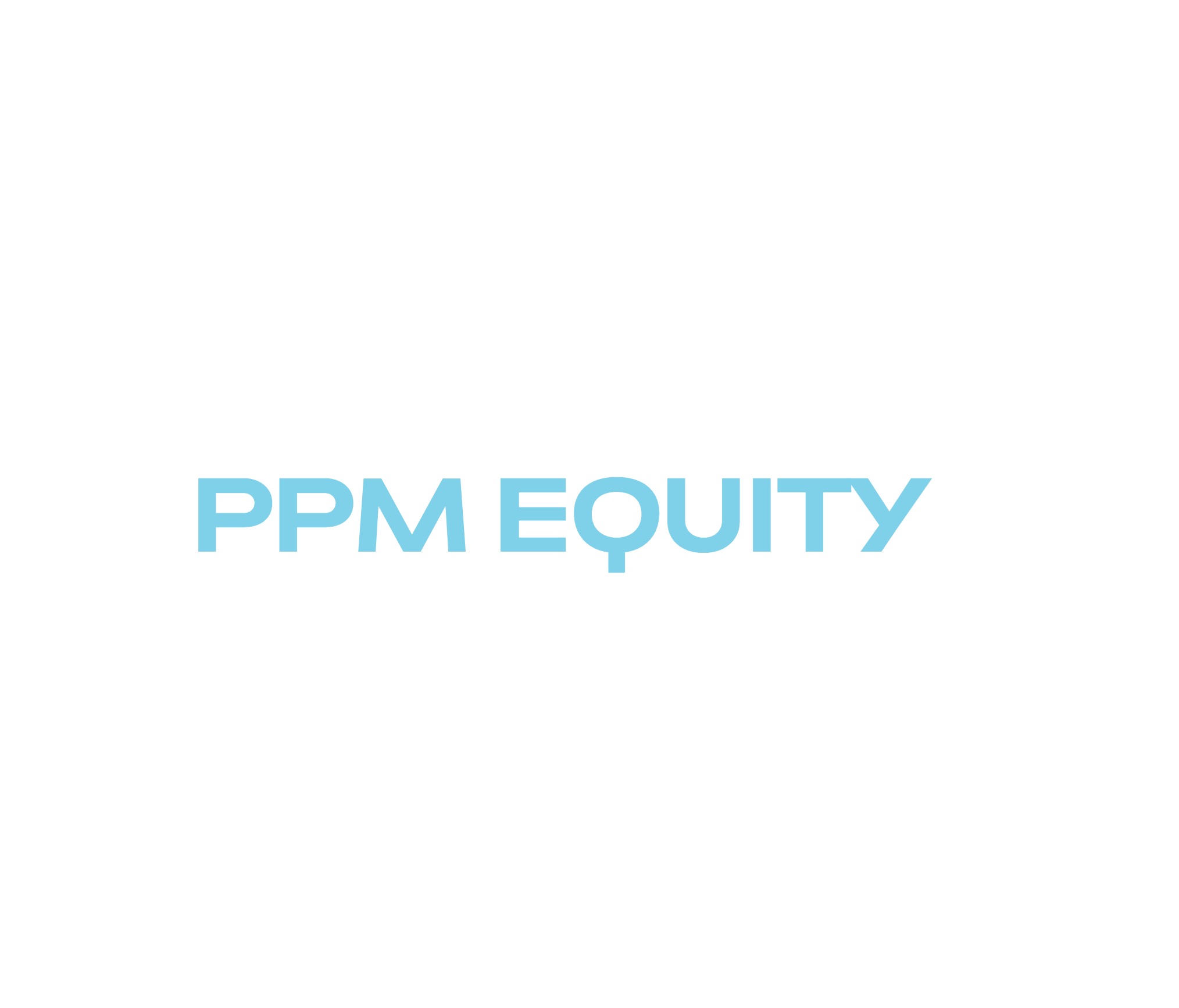Private Placement Equity Markets
Building Wealth: Investing in the Residential Real Estate Private Placement Equity Market
Building Wealth: Discover how savvy investors leverage private placement equity in residential real estate for consistent returns and growth opportunities.

Investing in the residential real estate private placement equity market allows qualified investors to access lucrative real estate assets without the need for public disclosure. Governed by Regulation D, which exempts these investments from SEC registration, it's an attractive option for high-net-worth individuals seeking consistent rental income, potential property appreciation, and unique tax advantages. Market trends indicate rising property values and growing demand for residential real estate investments. To manage risks, investors should diversify their portfolios, monitor local market conditions, and leverage cautiously. Proceeding with thorough research and due diligence, investors can potentially achieve substantial returns and growth in this sector.
Key Takeaways
- Private placements allow high-net-worth investors to access exclusive residential real estate opportunities for long-term growth and income.
- Consistent rental income and property appreciation provide steady cash flow and potential wealth accumulation.
- Leverage tax advantages through deductions on mortgage interest, property taxes, and 1031 exchanges.
- Diversify investments across various properties and utilize platforms for detailed information on projects.
- Conduct thorough due diligence to understand risks, evaluate sponsors, and analyze market conditions for informed investment decisions.
Understanding Private Placement Equity

Private placement equity involves the issuance of privately held equity securities in real estate ventures, typically reserved for qualified investors. This form of investment allows high-net-worth individuals and institutional investors to gain exposure to real estate assets without going through public markets. The process is governed by Regulation D, which provides specific exemptions from the typical registration requirements of the Securities and Exchange Commission (SEC).
Regulation D facilitates private placement offerings by allowing companies to raise capital while adhering to certain restrictions. This regulatory framework is essential for maintaining the integrity and security of the investment process. In 2017, a staggering $1.8 trillion was raised through Regulation D private placement offerings, highlighting its importance in the financial ecosystem.
Investors in private placement equity are generally subject to stringent qualifications, often needing to meet specific income or net worth criteria. This ensures that only those with a substantial understanding of financial markets can participate, minimizing potential risks.
Benefits of Residential Real Estate

Investing in residential real estate private placements offers consistent rental income and the potential for property appreciation over time. These investments can provide a steady cash flow from tenants, which is a significant advantage for those seeking regular income. Additionally, residential real estate often appreciates, allowing investors to benefit from increased property values.
There are notable tax advantages associated with residential real estate. Investors can deduct mortgage interest and property taxes from their taxable income, reducing their overall tax burden. These deductions can enhance the overall return on investment, making residential real estate a financially attractive option.
Residential real estate private placements also offer diversification benefits. By including real estate in their portfolio, investors can spread risk across different asset classes. This diversification can safeguard against market volatility and economic downturns, providing a more stable investment environment.
Compared to other asset classes, residential properties typically exhibit lower volatility, contributing to portfolio stability. The consistent demand for housing ensures a relatively steady market, making it less susceptible to dramatic fluctuations.
Lastly, private placements in residential real estate allow investors to access the market without the hassles of direct property management. Professional management teams handle the day-to-day operations, freeing investors to focus on other aspects of their financial strategy.
Market Trends and Opportunities

Rising property values in the residential real estate market are driving increased investor demand, particularly in private placement equity opportunities. This trend reflects a growing interest in assets that offer stability and long-term appreciation.
Investors are keen to capitalize on these opportunities as they seek to enhance their portfolios with resilient and inflation-hedged investments.
Rising Property Values
The surge in housing demand coupled with limited inventory has fueled a significant rise in residential property values, creating lucrative opportunities for investors. Residential real estate has experienced a steady climb in values, with the median home price in the U.S. reaching $397,800 in 2021. This upward trajectory is driven by a 15% year-over-year increase in some markets, making it a prime time for investment opportunities.
Investors looking to capitalize on the appreciation potential in residential real estate should note several key trends.
First, high demand and low inventory levels have created a competitive market, pushing property values higher.
Second, suburban areas have seen substantial increases in property values, with some experiencing double-digit growth.
These trends highlight the rising property values and underscore the potential for significant returns on investments in the residential real estate market.
Investors should remain vigilant, monitoring market conditions to capitalize on these promising investment opportunities.
Investor Demand Growth
Driven by the quest for stable returns and portfolio diversification, investor demand for residential real estate private placement equity is steadily increasing. This growth is evident as market trends show a clear shift towards private placements in residential real estate. High-net-worth individuals are particularly drawn to this investment, seeking to capitalize on long-term growth and income potential.
The residential real estate private placement equity market presents expanding opportunities. Investors now have access to a diverse range of properties and investment structures. This diversification allows for tailored investment strategies that can meet specific financial goals and risk tolerances. The rising interest aligns with a broader trend where high-net-worth individuals allocate more funds to alternative investments, aiming for enhanced returns.
With increasing demand, investors have the chance to engage in projects offering unique value propositions. These opportunities often present attractive risk-adjusted returns, balancing potential rewards with manageable risks.
As the market evolves, the appeal of residential real estate private placement equity continues to grow, promising a compelling avenue for wealth building and financial stability.
Risk Management Strategies

Effective risk management in the residential real estate private placement equity market hinges on strategic diversification and judicious use of leverage. Investors should spread risk by diversifying their portfolios across various types of residential properties. This approach can help mitigate the impact of market fluctuations on overall returns.
Using leverage can potentially enhance returns, but it's important to be cautious. Interest rate fluctuations can greatly affect the cost of borrowing, and over-leveraging can lead to financial strain during market downturns. Hence, investors must carefully balance their use of debt with their risk tolerance and investment goals.
Regularly evaluating and adjusting the investment portfolio is essential for successful risk management. Keeping an eye on local market conditions, rental demand, and regulatory changes allows investors to make informed decisions and adapt their strategies as needed.
To protect against unforeseen events, investing in property and liability insurance is advisable. This coverage can safeguard against potential losses from disasters or legal claims.
- Diversify investments across various residential properties.
- Utilize leverage cautiously and monitor interest rates.
- Stay informed about local market conditions and regulations.
Steps to Invest in Private Placements

To begin investing in private placements, one must first identify suitable investment opportunities within the residential real estate market.
Next, conducting thorough due diligence is essential to understand the potential risks and rewards. This includes analyzing the terms of the investment and evaluating the track record of the real estate sponsor or issuer.
Identify Investment Opportunities
When considering investment opportunities in residential real estate private placements, investors should start by researching available projects and platforms that facilitate these investments. Private placements in residential real estate offer a way to invest in specific properties or projects, often through private offerings or crowdfunding platforms.
Investors need to identify platforms that specialize in real estate investments and provide access to residential real estate private placements. By leveraging these platforms, they can uncover a range of investment opportunities tailored to different financial goals and risk appetites. It's essential for investors to examine the variety of projects available, as this can help in achieving diversification within their real estate portfolio.
Here are some steps to help identify investment opportunities:
- Research Platforms: Look for reputable platforms that offer residential real estate private placements. These platforms can provide detailed information about available projects and their potential returns.
- Evaluate Projects: Assess the specifics of each project, including location, property type, and projected financial performance.
- Consider Diversification: Diversifying across different markets and property types can mitigate risks and improve the potential for stable returns.
Conducting thorough research and carefully evaluating each opportunity enables investors to make informed decisions in the residential real estate private placement market.
Conduct Due Diligence
Once investors identify potential residential real estate private placements, they must conduct thorough due diligence to guarantee informed investment decisions. This process involves reviewing offering documents, financial statements, and the background of the issuer. Investors need to understand the risks involved, evaluate the investment strategy, and assess the sponsor's track record.
Due diligence in real estate private placements requires verifying the legal structure, analyzing market conditions, and evaluating potential returns. Investors should carefully review the subscription agreement, risk factors, and exit strategy. Understanding these elements helps mitigate risks and maximize potential returns.
A vital part of due diligence is examining the financial health of the issuer. Investors should scrutinize financial statements to confirm the issuer's stability and ability to deliver promised returns. Additionally, comprehending the investment strategy employed by the sponsor provides insight into the project's feasibility and alignment with investors' goals.
Analyzing market conditions is also essential. Investors must consider factors such as local real estate trends, economic conditions, and regulatory environments. This analysis helps determine the potential success of the investment.
Maximizing Returns and Growth

Maximizing returns and growth in the residential real estate private placement equity market requires strategic investment choices and leveraging available tax benefits. Investors can tap into the potential of private placements to achieve higher returns and generate passive income.
Unlike commercial real estate equity, residential properties often present opportunities to capitalize on market inefficiencies, enhancing overall investment performance. The historical data suggests that average annualized returns in this market range from 8-12%, making it an attractive option for long-term wealth accumulation.
To maximize returns, investors should also focus on the growth potential in residential real estate. Property values have shown consistent appreciation over time, contributing to the overall value of investments. Additionally, private placements offer exclusive deals that mightn't be available in public markets, allowing investors to diversify their portfolios effectively.
Leveraging tax benefits is another important strategy. Investors can utilize depreciation to reduce taxable income and take advantage of 1031 exchanges to defer capital gains taxes, thereby maximizing net returns.
- Strategic investment choices: Focus on exclusive private placements and market inefficiencies.
- Growth potential: Consistent property value appreciation.
- Tax benefits: Depreciation and 1031 exchanges to reduce tax liabilities.
Frequently Asked Questions
Do Private Equity Funds Invest in Real Estate?
Private equity funds invest in real estate. They typically target institutional and accredited investors, aiming for high returns and portfolio diversification.
These funds may focus on residential, commercial, or mixed-use properties. Their strategies often include acquiring undervalued properties, development projects, or distressed assets.
Is Real Estate Investing the Best Way to Build Wealth?
Real estate investing can be a strong strategy for building wealth due to its potential for property appreciation, passive income, and tax advantages. It offers portfolio diversification and often provides stability compared to other investments.
However, whether it's the best way to build wealth depends on individual financial goals, risk tolerance, and market conditions. Other investment avenues like stocks and bonds might suit different preferences and objectives.
What Does Warren Buffett Say About Investing in Real Estate?
Warren Buffett views real estate as a golden goose, symbolizing steady income and long-term growth. He emphasizes the importance of location and the potential for consistent returns.
Buffett advocates leveraging to boost returns and highlights the power of compounding over time. His strategy involves purchasing quality properties at fair prices and holding them to benefit from both appreciation and rental income, showcasing diversification in wealth-building.
How to Use Home Equity to Build Wealth?
To use home equity to build wealth, one can take out loans or lines of credit against their home's value. Lenders typically permit access to up to 80-85% of the home's equity.
This capital can then be invested in various ventures, such as real estate private placements. However, it's essential to carefully weigh the risks and rewards, ensuring a strategic and informed approach to maximize potential returns.
Conclusion
Investing in residential real estate private placements can reveal significant wealth-building opportunities. Understanding the nuances of private placement equity, coupled with recognizing market trends and diligent risk management, sets the stage for success.
But what if you could transform your financial future with just one strategic move? By mastering the steps to invest wisely and focusing on maximizing returns, investors stand on the brink of substantial growth.
The question remains: are you ready to take the leap?
Private Placement Equity Markets
Harvesting Returns: Investing in the Timber Private Placement Equity Market
Optimize your portfolio with timber investments offering stable returns and inflation protection—discover how to capitalize on this unique asset class.

Investing in the timber private placement equity market allows investors to own shares in privately-held timberland, offering potential capital appreciation and income from the natural growth of timber. This investment provides diversification benefits with low correlation to traditional assets and a natural hedge against inflation. Historical returns average 6-8% annually, contributing to stable, risk-adjusted returns. Timber investments are typically long-term and less liquid, but they also promote environmental sustainability. Evaluating different types of timber investments, from direct ownership to forestry funds, helps mitigate risks and align with investment goals. For in-depth insights on financial considerations and market stability, continue exploring.
Key Takeaways
- Timber investments offer predictable income and act as an effective inflation hedge through natural tree growth.
- Historical returns for timber private placements average 6-8% annually, providing stable income and capital appreciation.
- Timber investments contribute to portfolio diversification with low correlation to traditional assets, enhancing risk-adjusted returns.
- Sustainable forest management practices in timber investments support environmental sustainability and benefit local communities.
- Regulatory compliance and market volatility are critical factors to consider in timber private placements for informed investment decisions.
Understanding Timber Private Placements

Investors need to grasp the fundamentals of timber private placements to effectively evaluate their potential benefits and risks. Timber private placements involve investing in privately-held timberland through equity ownership. These investments provide exposure to timber assets, offering potential capital appreciation and income generation. By owning a share in timberland, investors can benefit from the natural growth of timber, which can be harvested and sold, generating periodic income.
Timber private placements typically have longer investment horizons and lower liquidity compared to public timber investments. This means investors must be prepared for a long-term commitment and may not be able to easily sell their interests. However, the extended timeline can allow for significant value growth as timber matures.
Understanding the structure, risks, and expected returns of timber private placements is essential. These investments can offer portfolio diversification, as timber assets often have low correlation with traditional equity and bond markets. Additionally, timber investments may provide tax advantages and act as a hedge against inflation.
Benefits of Timber Investments

Timber investments offer sustainable wealth generation through predictable income from timber harvesting and land appreciation. They also serve as an effective inflation hedge, maintaining value even during economic downturns.
Additionally, timber provides diversification benefits, enhancing portfolio stability due to its low correlation with traditional assets.
Sustainable Wealth Generation
Sustainable wealth generation through timber investments hinges on historical returns averaging 6-8% annually, making them an attractive option for long-term growth. Timberland investments offer a robust platform for sustainable forest management, which increases timber values over time. These investments are remarkable for their historical returns, providing stable income streams from harvesting activities. This stability is particularly appealing to investors in the private placement equity market who seek portfolio diversification.
Timber investments don't just promise financial gains; they contribute greatly to environmental sustainability. Through practices like carbon sequestration and biodiversity conservation, sustainable forest management ensures that timberland remains a renewable resource. The growing demand for timber products supports long-term returns, making these investments even more appealing.
Moreover, timberland investments enhance portfolio diversification. They provide risk-adjusted returns that are less correlated with traditional asset classes like stocks and bonds. This diversification is essential for mitigating risks and achieving stable income streams. In the private placement equity market, these characteristics are highly valued, offering a balanced approach to wealth generation.
Inflation Hedge Potential
Leveraging the biological growth of timber assets, these investments offer a natural hedge against inflation by outpacing the erosion of purchasing power. Timber investments have historically provided an effective inflation hedge due to the tangible nature of the asset and the long-term growth potential of trees. As trees grow, they increase in value, offering protection against inflationary pressures.
Timber's ability to generate income while trees mature helps investors maintain their purchasing power in inflationary environments. This steady income stream adds to the appeal of timber investments, making them an attractive option for those looking to safeguard their wealth. Additionally, the real asset nature of timber investments ensures that they retain intrinsic value, even when traditional financial markets fluctuate.
Timber investments also exhibit a low correlation with traditional assets like stocks and bonds, making them a valuable addition to a diversified portfolio. This low correlation means that timber's returns are less influenced by economic cycles, providing a more stable inflation hedge.
Consider the benefits of timber investments:
- Steady Income: Trees generate income as they mature.
- Long-Term Growth: The biological growth of timber outpaces inflation.
- Real Assets: Tangible nature retains value against market fluctuations.
Types of Timber Investments

Investors can explore a variety of timber investment options, ranging from indirect approaches like pension funds and REITs to direct ownership of timber properties. Timber investments offer different levels of control and involvement. Direct investments allow investors to manage timber properties and control harvest times, providing a tangible inflation hedge. However, they come with higher costs and greater responsibilities, including the need to mitigate risks from natural disasters and market fluctuations.
Diversification is essential in timber investments. By spreading assets across different regions, investors can reduce the risk posed by localized events like wildfires or pest infestations. Indirect investments, such as through forestry funds and REITs, provide a more passive approach. These options often have lower entry costs and require less active management, making them attractive to those looking for a hands-off investment.
Pension funds and private equity also offer indirect timber investment avenues, allowing for participation in broader portfolios that include timber assets. This diversification can help buffer against unpredictable market conditions and regional risks.
Evaluating Timberland Opportunities

When evaluating timberland opportunities, one must consider historical performance data that highlights competitive risk-adjusted returns driven by timber growth, harvesting, and land value changes. Timberland investments have shown attractive returns that often outpace traditional assets. They provide diversification benefits, as they tend to have low correlations with stocks, bonds, and real estate, making them an excellent addition to an investment portfolio.
Investors should focus on three main aspects when appraising timberland opportunities:
- Tree Growth: Trees naturally grow and increase in value over time, offering ongoing value accrual.
- Market Demand: Understanding global timber product flows and the long-term growth potential in various markets can have a profound impact on investment outcomes.
- Diversification: Implementing spatial, temporal, and product diversification strategies can mitigate risks and enhance returns.
Timberland properties can be strategically selected to balance risks across different countries, ages of timber, and tree species. This approach ensures that an investment portfolio benefits from steady biological tree growth while leveraging flexibility in structuring investments to meet specific needs.
Risks and Challenges

Investors in the timber private placement equity market face significant risks and challenges, including market price volatility for timber products and regulatory compliance issues.
Fluctuations in timber prices can impact returns, while changes in land use regulations can disrupt investment strategies.
These factors require careful consideration to mitigate potential negative impacts on profitability.
Market Volatility Concerns
Despite the potential for high returns, the timber private placement equity market faces significant challenges due to market volatility caused by price fluctuations in timber products. These fluctuations can impact the rights associated with timber assets, leading to unpredictable cash flows and varied investment returns. Investors must have a strong risk tolerance to navigate this volatile market effectively.
Several factors drive market volatility in the timber industry:
- Supply and Demand Imbalances: Shifts in supply and demand can cause significant timber price changes, affecting investment returns.
- Macroeconomic Factors: Interest rates, housing market trends, and global trade policies all play a role in influencing timber prices.
- Environmental Factors: Natural disasters and climate changes can disrupt timber supplies, causing price instability.
Market volatility concerns are further compounded by challenges in projecting accurate cash flows. Investors must consider long-term investment horizons and active risk management strategies to mitigate these risks. Diversification within the timber assets can also help in reducing exposure to market volatility.
Understanding these challenges is essential for investors seeking to balance potential high returns with the inherent risks in the timber private placement equity market. Effective management of these factors can lead to more stable and predictable investment outcomes.
Regulatory Compliance Issues
Understanding regulatory compliance in the timber private placement equity market requires a thorough knowledge of SEC regulations and reporting requirements. Adhering to these rules is essential to guarantee investor protection and maintain market integrity. Challenges in this sector include maneuvering through complex securities laws and ensuring transparency in financial disclosures.
Non-compliance with SEC regulations can lead to significant risks, including legal penalties, reputational damage, and potential loss of investor trust. To mitigate these risks, firms must engage in rigorous compliance efforts. This often involves hiring legal experts who specialize in securities law, conducting thorough due diligence, and implementing robust internal control systems. These efforts help guarantee that all regulatory requirements are met and that the firm operates within the legal framework.
Moreover, staying up-to-date with the changing regulatory landscape is essential. Regulations can evolve, and firms must adapt quickly to new rules and guidelines. Maintaining a culture of compliance is also crucial, as it fosters an environment where adherence to regulations is a top priority.
Sustainable Forest Management

How can sustainable forest management practices simultaneously promote economic growth, environmental stewardship, and social well-being in the timber industry?
Sustainable forest management balances these goals by ensuring that timberland is managed with a focus on long-term returns and ecosystem health. Implementing responsible harvesting techniques helps maintain biodiversity and allows forests to act as carbon sinks, which are essential for mitigating climate change.
Certified programs like FSC and SFI play a pivotal role by enforcing standards that promote responsible harvesting techniques, ensuring that forest management practices don't deplete resources or harm biodiversity. This approach not only enhances timberland returns but also sustains the health of the ecosystem, benefiting both the environment and local communities.
Consider the emotional benefits of sustainable forest management:
- Economic Growth: Long-term timberland returns provide financial stability and job opportunities.
- Environmental Stewardship: Forests managed as carbon sinks contribute to global climate change mitigation.
- Social Well-being: Communities benefit from the preservation of natural resources and biodiversity.
Financial Considerations

Investors looking into timber private placement equity must carefully weigh the financial considerations, including the long-term commitments and potential illiquidity of these investments. Timber private placement equity offers access to timberland assets, which can diversify a portfolio to a great extent. However, these investments typically require a considerable time horizon, often appealing to institutional investors and high-net-worth individuals.
Returns in this market can come from various sources such as timber growth, land appreciation, and sustainable practices. Importantly, the involvement of major financial institutions like JPMorgan Chase adds credibility and structure to these investments. Additionally, investors may enjoy tax advantages, which can enhance overall returns. This makes timber private placement equity an attractive option for those looking to diversify their portfolios.
Below is a table summarizing key financial considerations:
| Financial Aspect | Description | Impact |
|---|---|---|
| Long-term Commitment | Investments often require a long-term horizon | Reduces liquidity |
| Multiple Return Sources | Returns from timber growth, land appreciation, and sustainable practices | Enhances potential gains |
| Tax Advantages | Potential tax benefits associated with timber investments | Increases net returns |
Careful analysis of these factors is essential for informed decision-making in the timber private placement equity market.
Long-Term Growth Potential

Given the financial considerations associated with timber private placement equity, it's important to highlight the substantial long-term growth potential these investments offer. Timber private placement equity investments benefit from biological tree growth and land value appreciation, providing a steady increase in value. Historical data confirms that timber investments have outperformed traditional asset classes, such as stocks and bonds, over the long term.
Timber investments also serve as an effective hedge against inflation and economic uncertainties. Trees grow predictably over time, ensuring a consistent return even during periods of market volatility. Additionally, the timber private placement equity market has demonstrated resilience and stability, offering attractive risk-adjusted returns to investors.
Moreover, these investments align with sustainable practices, contributing to environmental benefits and a more eco-friendly economy.
The growth potential of timber investments can be summarized in three key points:
- Biological and Land Value Growth: Trees and land appreciate over time, enhancing investment value.
- Inflation Hedge: Timber investments provide stability during economic fluctuations.
- Sustainability: These investments support eco-friendly and sustainable practices.
Frequently Asked Questions
What Is the Rate of Return on Timber?
The rate of return on timber investments typically ranges from 4% to 8% annually. These investments offer stable cash flows and potential for long-term appreciation. Historical data shows that timber provides competitive returns compared to traditional asset classes.
Factors like demand for wood products, land value appreciation, and forest management practices can influence the rate of return. Investors can find attractive risk-adjusted returns in the timber private placement equity market.
What Is the Return on Timberland Investments?
The return on timberland investments typically ranges from 5% to 7% annually. These investments offer long-term appreciation due to the biological growth of trees and land value increases.
Timberland investments are known for their stability and ability to hedge against inflation. Additionally, they've shown limited correlation with traditional asset classes, making them an attractive option for portfolio diversification, as tracked by the NCREIF Timberland Property Index.
Is Timber Land a Good Investment?
Timberland investments are the holy grail of portfolio diversification. They offer competitive risk-adjusted returns through timber growth and land value appreciation. These investments hedge against inflation and have a low correlation with traditional asset classes.
With the increasing demand for wood products and sustainable forestry practices, timberland's long-term appreciation potential remains strong. Investors can benefit from stable returns and environmental advantages, making timberland a compelling investment choice.
What Is the Harvesting Period in Private Equity?
The harvesting period in private equity refers to the timeframe when investments are liquidated or exited to generate returns. Typically lasting 5-7 years, this period's duration can vary based on the investment strategy.
During this time, the focus is on maximizing returns through strategies like IPOs, acquisitions, or secondary market sales. Investors must carefully consider the timing and methods of harvesting to optimize their returns in private equity investments.
Conclusion
Investing in timber private placements offers significant benefits, including portfolio diversification and potential long-term growth.
Though some may worry about market volatility and risks, sustainable forest management practices can mitigate these concerns.
Evaluating timberland opportunities thoroughly guarantees informed decision-making.
Ultimately, timber investments provide a unique asset class that combines financial returns with environmental stewardship, making it a compelling option for discerning investors seeking stable, long-term gains.
Private Placement Equity Markets
Forging Ahead: Exploring the Steel Private Placement Equity Market
Discover the lucrative potential of the steel private placement equity market and uncover strategic investment opportunities that can redefine your portfolio.

Steel private placements offer unique opportunities for investors seeking diversified portfolios with a blend of income and growth strategies. Regulatory exemptions, like 506(b) and 506(c), ease capital-raising, making it attractive for investors. The market has seen a surge in new offerings, especially in sintered steel, which benefits from technological advancements enhancing strength and precision. Investors gain exposure to high-demand materials, though they should be mindful of risks such as market fluctuations and economic downturns. Successful investments have shown steady returns, with strategic partnerships fostering industry growth. Exploring these dynamics further reveals deeper insights and potential opportunities.
Key Takeaways
- Surge in New Offerings: January saw 20 new steel private placements, indicating robust market interest and growth potential.
- Investment Strategies: Focus on income, growth, and income-growth strategies, catering to diversified investor portfolios.
- Technological Advancements: Sintered steel's enhanced strength and precision drive investor interest in innovative applications.
- Market Resilience: Successful steel private placements have yielded 12% average annual returns, with steady income and capital appreciation.
- Risk Factors: Investors must consider demand fluctuations, economic downturns, and regulatory impacts on operational costs.
Understanding Steel Private Placements

Steel private placements are an essential segment of the broader private placement market, offering unique opportunities for investors to gain exposure to the steel industry. These investments cater to those seeking alternative investments, which can provide diversified portfolios outside of traditional stocks and bonds. With diverse investment objectives, steel private placements often focus on income, growth, and growth and income strategies, aligning with various investor goals.
Regulatory exemptions, such as the 506(b) and 506(c) exemptions, play an important role in the capital-raising process for steel private placements. These exemptions allow issuers to raise funds without the need for extensive regulatory filings, making it easier to meet fundraising targets. Successful fund closures in this sector signify that the investments have achieved their fundraising targets within the stipulated timelines, indicating strong investor interest and confidence.
The steel industry, known for its cyclical nature, requires substantial capital for operations and expansion. Through private placements, companies can secure the necessary funding to fuel growth and innovation. Investors, in turn, benefit from potential returns aligned with their specific investment objectives, making steel private placements a compelling option in the alternative investment landscape.
Market Trends and Opportunities

The growing interest in the steel private placement equity market is reflected by a surge in new offerings, with 20 added in January alone. This spike showcases a robust demand for investment in the steel sector. Particularly, real estate-related funds dominate this market, representing 73% of the total funds currently raising capital.
Private placements in the steel sector offer attractive opportunities through sintered steel, a material known for its enhanced strength, durability, and precision. Investors are drawn to these innovative materials, seeing their potential to revolutionize various applications. Additionally, collaborative innovation is driving advancements in sintering technologies, fostering partnerships that accelerate the adoption of sintered steel.
The market trends also show promising results in private placement closures, with funds raising an average of 81% of their target capital. This indicates strong investor confidence in the sector's potential.
As these trends continue, the private placement equity market in the steel sector presents numerous opportunities for growth and innovation.
Understanding these dynamics helps investors and stakeholders navigate the evolving landscape, recognizing the value that innovative materials and collaborative efforts bring to the market. The future looks bright for those participating in this burgeoning sector.
Technological Advancements in Steel

Building on the promising market trends and opportunities, technological advancements in the steel industry are driving significant improvements in material performance and sustainability. One notable breakthrough is sintered steel, which offers enhanced strength, durability, and precision. This high-performance material is revolutionizing industries such as automotive and aerospace by optimizing material usage and aligning with sustainability goals.
Sintered steel's superior mechanical properties make it ideal for applications requiring intricate design capabilities and exacting standards. Its use in precision engineering underscores its reliability and efficiency. The steel industry's push towards sintering technologies is expanding the boundaries of what can be achieved, fostering an environment ripe for progress and growth.
Collaborative innovation plays an important role in accelerating the adoption of sintered steel. By working together, companies can better integrate these technological advancements, contributing to a more sustainable and efficient production process. This collaboration helps meet sustainability goals while ensuring that the mechanical properties of the material aren't compromised.
Investor Benefits and Risks

Investors in the steel private placement equity market gain exposure to a high-demand material integral to industries like automotive and aerospace. This sector offers significant investor benefits, including participation in a market driven by the need for versatile and high-performance steel products. The growth potential is significant, bolstered by collaborative innovation and advancements that align with sustainability goals.
However, investors must also consider the inherent risks. Fluctuations in demand for steel products and exposure to economic downturns can impact returns. Understanding these risks is essential for making informed decisions in the private placement equity market.
| Investor Benefits | Investor Risks | Market Insights |
|---|---|---|
| High-performance material | Fluctuations in demand | Integral to key industries |
| Enhanced strength | Economic downturns | Growth potential |
| Sustainability alignment | Industry volatility | Innovation-driven |
| Versatile applications | Market competition | Long-term potential |
| Critical for aerospace | Supply chain disruptions | Greener alternatives |
Structuring a Private Placement Deal

Understanding the benefits and risks of investing in the steel private placement equity market sets the stage for exploring how to structure a deal effectively.
Structuring a private placement deal in the steel sector involves several critical steps. First, determining capital requirements is essential. Investors need to comprehend how much capital a steel manufacturing company needs for growth or expansion. Accurate valuation of the company is also vital, as it helps in setting fair terms for equity investments.
Potential returns are another key consideration. Investors look for opportunities with promising returns, supported by the steel sector's industry resilience and long-term growth potential. Conducting thorough due diligence is necessary to assess the company's financial health, market position, and future prospects.
Securing favorable terms in the deal requires careful negotiation and legal documentation. These terms can include equity stake, dividend rights, and exit strategies. The goal is to make certain that the investment aligns with the investor's objectives while supporting the company's growth.
Regulatory Considerations

Understanding the regulatory landscape in the steel private placement equity market requires strict adherence to SEC regulations and investor accreditation rules. Issuers must navigate complex SEC regulations, particularly the 506(b) and 506(c) exemptions, which provide essential fundraising exemptions. These exemptions allow issuers to raise capital without registering securities, provided they comply with specific conditions.
A critical aspect of compliance involves the Form D filing with the SEC. This form notifies the SEC of the securities offered and sold in reliance on Regulation D, ensuring transparency and regulatory oversight. Accurate and timely Form D filing is crucial for maintaining compliance and avoiding penalties.
Investor accreditation rules are another cornerstone. Only accredited investors, who meet specific income or net worth criteria, can participate in these offerings, ensuring they understand the associated risks. Adherence to these rules is non-negotiable to meet regulatory standards.
Moreover, issuers must comply with anti-fraud provisions. These provisions protect investors by prohibiting deceitful practices. Transparency requirements mandate the disclosure of all material information, ensuring investors are well-informed.
Compliance with these regulatory considerations is essential for the integrity and success of the steel private placement equity market.
Case Studies of Successful Investments

Moreover, having navigated the complex regulatory landscape, let's examine case studies of successful investments in the steel private placement equity market. Over the past five years, successful steel private placements have demonstrated an average annual return of 12%, consistently outperforming broader market indices. These investments have provided investors with both steady income streams and capital appreciation, making them attractive options for those seeking reliable returns.
One notable aspect of steel private placements is their role in diversified portfolios. By including these investments, portfolios have exhibited lower volatility and achieved higher risk-adjusted returns. This is largely due to the resilient nature of the steel industry, which has shown strong long-term prospects even amid economic fluctuations.
Investors have found that steel private placements offer a balanced mix of income and growth potential. The steady income streams generated from these placements, coupled with capital appreciation, have made them a compelling choice for those looking to enhance portfolio performance.
Moreover, the industry's resilience and growth trajectory suggest that steel private placement equity investments will continue to be a prudent choice for investors aiming for sustainable, long-term gains.
Future Outlook and Predictions

The future outlook for the steel private placement equity market shows promising growth projections, with more funds targeting steel-related investments. Investment opportunities appear abundant, driven by the need for infrastructure development and technological advancements.
However, potential risks such as market volatility and regulatory changes necessitate careful analysis to guarantee sustainable returns.
Market Growth Projections
Investors can expect robust growth in the steel private placement equity market, with monthly additions of new funds and diversification within niche sectors fueling this positive trend. The market's expansion is driven by a consistent increase in capital infusion, as more funds are directed towards innovative and emerging segments within the steel industry. This shift reflects a broader array of investment opportunities, appealing to a diverse range of investors.
Despite a 39% year-over-year decline in capital targeting real estate funds within the steel private placement market, overall growth projections remain optimistic. This decrease indicates a strategic redirection of funds away from traditional investments and towards more dynamic, high-potential areas. However, the focus on Opportunity Zones has waned, yet the market's outlook is still buoyant due to other compelling factors.
Collaborative innovation and strategic partnerships are pivotal in driving the market forward. These collaborations foster technological advancements and operational efficiencies, enhancing the market's attractiveness to investors. As companies within the steel industry forge new partnerships, they tap into further potential for growth and development. This environment of progress and growth underscores the promising future of the steel private placement equity market.
Investment Opportunities Ahead
As the steel private placement equity market continues to evolve, investors can look forward to a plethora of promising investment opportunities driven by rising demand and innovative advancements. The steel sector is witnessing an anticipated growth in private placements, as companies seek capital to fund new projects and expansions. This rise in demand for steel-related ventures is likely to attract private equity investments, presenting substantial opportunities for stakeholders.
Investment opportunities within the private placement equity market are set to flourish, bolstered by strategic partnerships and industry advancements. These collaborations can drive innovation and facilitate the development of cutting-edge technologies in the steel industry. Additionally, the market's potential for expansion means investors can expect a dynamic environment where new and existing companies aim to capitalize on emerging trends.
The steel sector's ongoing transformation, marked by increased capital inflow and innovative strategies, promises a fertile ground for private equity investments. As the market continues to mature, the fusion of strategic partnerships and technological progress will likely yield significant returns.
Investors should remain vigilant, as these developments could reshape the landscape of the steel private placement equity market, offering a wealth of growth opportunities in the coming years.
Potential Risks Analysis
In the coming years, potential risks in the steel private placement equity market could stem from economic downturns that impact demand for steel products. Investors should be aware of several key factors that could influence the financial stability and profitability of their investments.
- Fluctuations in Raw Material Prices: Variability in the cost of iron ore and other essential materials can have a substantial impact on profit margins and overall financial performance within the steel industry.
- Global Trade Tensions and Tariffs: Ongoing trade disputes and the imposition of tariffs may disrupt supply chains and market stability, creating uncertainties in the steel private placement equity market.
- Technological Advancements: The shift towards sustainable steel production methods and other innovations could pose risks for traditional steel investments, necessitating a significant capital outlay to stay competitive.
- Government Regulations: Changes in environmental standards and emissions regulations could affect operational costs and profitability, as companies may need to invest heavily in compliance measures.
Frequently Asked Questions
What Are the Disadvantages of Private Placement?
Private placement has several disadvantages. It's illiquid, making it hard to sell or exit before maturity.
There's limited transparency, providing less information for risk evaluation. Higher risk is involved due to less regulatory oversight and investment in early-stage companies.
High minimum investments restrict access to many investors. Lastly, regulatory restrictions limit offerings to accredited investors, reducing the pool of potential participants.
What Is a Ppm in Investing?
A PPM in investing is a Private Placement Memorandum. It's a legal document that outlines the terms of a private placement offering.
Don't judge a book by its cover; PPMs provide detailed information on investment opportunities, risks, financial projections, and terms. They guarantee compliance with securities regulations, protecting issuers and investors by disclosing all relevant facts.
Reviewing a PPM helps investors make informed decisions about participating in private placements.
Is a Private Placement Good for a Stock?
A private placement can be beneficial for a stock as it allows companies to raise capital quickly and with fewer regulatory hurdles. By targeting accredited investors, companies can secure funding efficiently and maintain control over ownership and decision-making. This method can lead to strategic partnerships and tailored deal structures, which align with specific company goals.
However, it can also increase ownership concentration, potentially impacting stock liquidity.
Who Invests in Private Equity?
Institutional investors, such as pension funds, endowments, and insurance companies, heavily invest in private equity. High-net-worth individuals, family offices, and sovereign wealth funds also participate in this market.
These investors are attracted to private equity due to its potential for higher returns and portfolio diversification, despite the longer lock-up periods of 7 to 10 years. Private equity investments often provide higher risk-adjusted returns compared to traditional investments.
Conclusion
The steel private placement equity market presents promising opportunities for investors, driven by technological advancements and market trends.
While some may worry about regulatory complexities, understanding the structure and benefits can mitigate risks.
Successful case studies highlight the potential for significant returns.
As the market continues to evolve, staying informed about emerging trends and regulatory changes will be essential.
Investors willing to navigate this landscape can find lucrative prospects in the steel industry.
Private Placement Equity Markets
Innovating for Investment: Investing in the Technology Private Placement Equity Market
Invest in the technology private placement equity market to unlock high-growth opportunities and groundbreaking innovations – discover how to maximize your returns.

Investing in the technology private placement equity market grants unique access to high-growth tech firms before they go public. Investors benefit from lower valuations and substantial upside potential by engaging with innovative, disruptive companies. Leveraging cutting-edge technologies like AI for trend prediction and blockchain for transaction security boosts confidence and investment protection. Active trend analysis helps pinpoint emerging opportunities, maintaining competitive advantage in a rapidly evolving landscape. Maneuvering market disruptions with strategic investments allows capitalizing on significant growth despite volatility. This approach offers a pathway to potentially transformative returns by understanding and seizing early investment opportunities in groundbreaking technology sectors.
Key Takeaways
- Leverage AI to predict market trends for strategic investment decisions.
- Utilize blockchain for transparent, secure, and immutable transaction records.
- Identify high-growth tech companies pre-IPO for substantial returns.
- Monitor emerging tech trends to stay ahead in the evolving market.
- Navigate market disruptions by focusing on disruptive technologies like AI and blockchain.
Understanding Technology Private Placement

In addition, technology private placement involves investors directly funding private companies in the technology sector before they go public. This form of investment allows investors to access pre-IPO technology firms with high growth potential through private placements. By doing so, they can engage with innovative companies that are at the forefront of technological advancements and disruptive business models.
Private placements in technology offer a unique opportunity to invest in companies that mightn't yet be available on the public market. These investments can be particularly appealing due to their potential for high growth. Many of these innovative companies are developing cutting-edge technologies that promise to reshape industries and create new market opportunities.
Investors seeking to diversify their portfolios may find technology private placements advantageous. Diversification helps mitigate risks by spreading investments across different sectors and asset types. Additionally, early-stage investments in technology firms can yield significant returns if these companies succeed and grow.
Leveraging Cutting-Edge Technologies

Investors can greatly enhance their private placement strategies by leveraging cutting-edge technologies such as AI and blockchain. In the private placement equity market, AI-driven investment decisions and blockchain-enabled transactions are revolutionizing how investments are made.
AI algorithms analyze vast amounts of data to identify promising investment opportunities and predict market trends with remarkable efficiency and accuracy. This allows investors to make well-informed decisions, reducing risks and maximizing potential returns.
Blockchain technology, on the other hand, guarantees transparent and immutable transaction records. This transparency not only boosts investor confidence but also strengthens the security of transactions. Investors can trust that their transactions are recorded accurately and can't be tampered with, which adds a layer of protection to their investments.
Identifying High-Growth Opportunities

Spotting high-growth opportunities in the technology private placement equity market involves keenly analyzing emerging tech companies with strong potential before they hit the public markets. Private placement equity investments provide a unique chance to engage with innovative tech companies during their pre-IPO stages. By investing early, investors can access lower valuations and enjoy higher upside potential. These early-stage investments often involve disruptive technologies and emerging trends within the tech sector, making them particularly attractive.
Identifying high-growth opportunities requires a thorough examination of a company's technology, market potential, and competitive landscape. Investors should focus on companies that aren't only innovative but also capable of scaling rapidly. These companies often leverage disruptive technologies that can transform industries, offering substantial growth possibilities.
Moreover, the tech sector is rife with emerging trends that signal future high-growth opportunities. Keeping an eye on these trends can help investors pinpoint companies poised for significant returns. Investing in private placement equity allows for participation in these high-growth opportunities before they become widely recognized, providing a strategic advantage.
Benefits of Active Trend Analysis

By leveraging active trend analysis, one can seize emerging opportunities in the technology private placement equity market. This approach involves diligently monitoring industry trends, market dynamics, and technological advancements to make well-informed investment decisions. By identifying shifts and patterns early, investors can pinpoint companies with high-growth potential and secure investments at the most opportune moments.
Active trend analysis enables investors to stay ahead in the rapidly evolving technology landscape. By understanding the latest technological advancements, they can position themselves strategically and make decisions that are both timely and data-driven. This foresight often translates into higher returns, as investors can capitalize on the growth of innovative companies before they become widely recognized.
Moreover, active trend analysis provides a competitive edge. In the highly competitive private placement equity market, being able to anticipate market movements and technological trends allows investors to outperform their peers. By continuously analyzing and adapting to market conditions, they can mitigate risks and maximize their investment outcomes.
Navigating Market Disruptions

Effectively managing market disruptions in the technology private placement equity market requires strategic investments in cutting-edge companies. Understanding the impact of disruptive technologies like AI and blockchain is essential. These technologies can redefine industries, presenting unique investment opportunities for those well-versed in the private placement equity landscape.
Innovative companies at the forefront of these disruptions often drive significant growth within the technology sector. Investors must be agile and possess foresight to identify promising investment prospects during periods of market volatility. Adapting to market disruptions demands a deep understanding of emerging trends and the ability to assess which technologies will influence the future.
For instance, the rise of AI and blockchain has led to substantial shifts in various industries, creating potential windfalls for savvy investors. Recognizing these trends early allows investors to capitalize on transformative shifts within the technology sector. Tech companies that effectively navigate disruptions can become lucrative investment opportunities, enhancing overall portfolio performance.
Navigating market disruptions in the technology private placement equity market hinges on the ability to spot innovative solutions driving growth. By maintaining agility and continuously analyzing the market's evolving landscape, investors can effectively manage disruptions and seize high-potential investment opportunities, ensuring sustained success in the technology sector.
Frequently Asked Questions
What Are the Tax Implications of Investing in Technology Private Placements?
Investing in technology private placements has several tax implications. Capital gains taxes apply upon selling shares at a profit. Long-term investments, held over a year, benefit from lower tax rates.
Losses can offset gains, reducing taxable income. Additionally, qualified small business stock (QSBS) provisions might offer significant tax exclusions.
Investors should consult a tax advisor to understand specific obligations and benefits related to their individual situations.
How Do I Conduct Due Diligence on Emerging Tech Startups?
How does one guarantee they're making a wise investment in emerging tech startups?
First, analyze the startup's business model and market potential.
Next, review financial statements and projections for viability.
Conduct background checks on founders and the management team.
Assess the competitive landscape and the startup's unique value proposition.
Lastly, seek expert opinions and consult industry reports to validate findings and minimize risks.
What Role Do Regulatory Changes Play in Private Equity Investments?
Regulatory changes play an essential role in private equity investments by shaping the legal and compliance landscape. They can impact investment strategies, risk assessments, and operational processes.
Changes in regulations may introduce new opportunities or constraints, affecting how private equity firms evaluate potential investments. Staying updated on regulatory shifts guarantees firms remain compliant and can adapt their strategies effectively to navigate the evolving market environment.
How Can Individual Investors Access Private Placement Opportunities?
Individual investors can access private placement opportunities through accredited investor status, which typically requires a high net worth or significant income.
They can also explore online platforms specializing in private equity investments, join investment clubs, or work with financial advisors who have access to such deals.
Networking at industry events and staying informed about emerging opportunities can further enhance their chances of participating in private placements.
What Are the Common Exit Strategies for Technology Private Equity Investments?
Could the most effective exit strategy theory be true?
Common exit strategies for technology private equity investments include:
- Initial public offerings (IPOs),
- Mergers and acquisitions (M&A), and
- Secondary sales.
IPOs allow a company to go public, providing liquidity. M&A involves selling the company to another firm, often at a premium. Secondary sales let investors sell their shares to other investors, offering a quicker exit.
Each strategy has its own benefits and risks.
Conclusion
Investing in the technology private placement equity market requires a deep understanding of emerging technologies. Identifying high-growth opportunities and actively analyzing trends are crucial components of success.
It's like steering a ship through changing tides; one must be aware of market disruptions and adapt swiftly. By leveraging cutting-edge technologies and staying vigilant, investors can capitalize on lucrative opportunities.
Success in this market hinges on a blend of knowledge, strategic insight, and timely decision-making.
-

 Private Placement Equity Markets2 months ago
Private Placement Equity Markets2 months agoSowing Seeds of Success: Exploring the Agribusiness Private Placement Equity Market
-

 Private Placement Equity Markets2 months ago
Private Placement Equity Markets2 months agoLeasing for Profits: Navigating the Commercial Real Estate Private Placement Equity Market
-

 Private Placement Memorandum2 months ago
Private Placement Memorandum2 months agoRiding the Wave: Analyzing Current Trends in Private Equity Markets
-

 Private Placement Equity Markets2 months ago
Private Placement Equity Markets2 months agoHarvesting Returns: Investing in the Timber Private Placement Equity Market
-

 Private Placement Memorandum2 months ago
Private Placement Memorandum2 months agoPrivate Equity Playbook: Proven Strategies for Successful Investing
-

 Private Placement Memorandum2 months ago
Private Placement Memorandum2 months agoTriumph Tales: Case Studies of Successful Private Placements
-

 Private Placement Equity Markets2 months ago
Private Placement Equity Markets2 months agoForging Ahead: Exploring the Steel Private Placement Equity Market
-

 Private Placement Equity Markets2 months ago
Private Placement Equity Markets2 months agoPowering Portfolios: Exploring the Utilities Private Placement Equity Market







